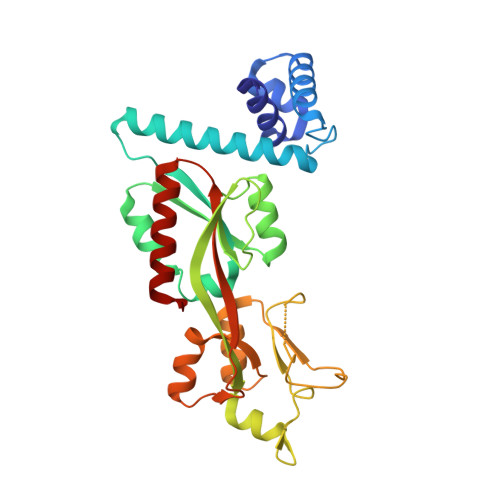Engineering and application of a biosensor with focused ligand specificity.
Della Corte, D., van Beek, H.L., Syberg, F., Schallmey, M., Tobola, F., Cormann, K.U., Schlicker, C., Baumann, P.T., Krumbach, K., Sokolowsky, S., Morris, C.J., Grunberger, A., Hofmann, E., Schroder, G.F., Marienhagen, J.(2020) Nat Commun 11: 4851-4851
- PubMed: 32978386
- DOI: https://doi.org/10.1038/s41467-020-18400-0
- Primary Citation of Related Structures:
6XTU, 6XTV - PubMed Abstract:
Cell factories converting bio-based precursors to chemicals present an attractive avenue to a sustainable economy, yet screening of genetically diverse strain libraries to identify the best-performing whole-cell biocatalysts is a low-throughput endeavor. For this reason, transcriptional biosensors attract attention as they allow the screening of vast libraries when used in combination with fluorescence-activated cell sorting (FACS). However, broad ligand specificity of transcriptional regulators (TRs) often prohibits the development of such ultra-high-throughput screens. Here, we solve the structure of the TR LysG of Corynebacterium glutamicum, which detects all three basic amino acids. Based on this information, we follow a semi-rational engineering approach using a FACS-based screening/counterscreening strategy to generate an L-lysine insensitive LysG-based biosensor. This biosensor can be used to isolate L-histidine-producing strains by FACS, showing that TR engineering towards a more focused ligand spectrum can expand the scope of application of such metabolite sensors.
- Institute of Biological Information Processing, IBI-7: Structural Biochemistry, Forschungszentrum Jülich, D-52425, Jülich, Germany.
Organizational Affiliation:

















